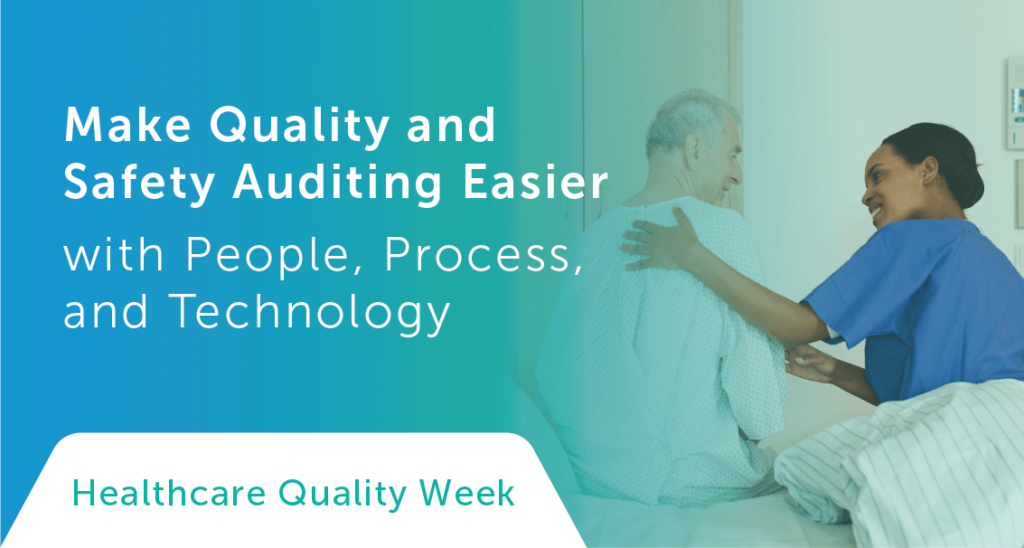The phrase “People, process, and technology” has been around since 1964. And according to a recent IBM study, business transformation initiatives often concentrate on process and technology as the two primary components of success, with not enough emphasis on the people aspect of the change initiative.
In honor of Healthcare Quality Week, we wanted to highlight how healthcare professionals are ensuring safer, patient-centered care through the lens of people, processes, and technology.
Simply put, achieving and sustaining improved patient outcomes and experiences requires a concentrated effort in addressing people, process, and technology. But what does this really mean when creating a patient engagement strategy? How can you successfully apply this approach to your teams?
In partnering with many of the nation’s top healthcare organizations to improve patient communication and care coordination across the continuum, CipherHealth’s team of patient engagement experts advises on best practices to develop a comprehensive strategy that sets people, processes, and technology up for long-term success. Let’s examine this framework with the following case study as an example.
Case Study: Reduced Harm Rates Powered by Digital Rounding
As a world-renowned academic medical center, this Virginia-based health system is driven by the mission of advancing health for the community it serves. In caring for more than two million patients annually, this health system is committed to ensuring the highest quality of care every time and with every touch. Motivated by a shared dedication to high-reliability care, leaders across the organization championed a strong culture of rounding.
However, the process of using pen and paper to conduct rounds did not provide access to real-time data, making it hard to close the loop on issues effectively. Moreover, this led to missed opportunities to identify and address potential issues impacting patient safety. With the focus on safety and an organizational commitment to innovation, digitizing rounds – as well as quality and safety audits – became a priority. Even with a strong focus on people and process, technology would enable greater visibility into how common safety processes could be leveraged more effectively.
People
By engaging in purposeful rounding as a foundational evidence-based practice proven to deliver strong service, clinical, and operational results, nurse leaders at the health system are dedicated to the delivery of safe, high-quality care. Limited by analog tools, these leaders found it difficult to track, audit, and monitor initiatives to meet regulatory standards. As such, they initiated the organizational change needed to more effectively conduct “360-degree” rounds that incorporated assessments of the CAUTI bundle, CLABSI bundle, and SCD safety questions into their existing workflows.
Process
Many research studies demonstrate that the timely detection of errors, including feedback to clinical staff, is necessary for patient safety improvements. Real-time patient safety audits can effectively safeguard against adverse events, leading to policy and practice updates.
For example, catheter-associated urinary tract infections (CAUTIs) are the most common healthcare-associated infection (HAI) and place a total economic burden of $1.7 billion annually in the United States. Due to the high cost and volume of CAUTIs and the effectiveness of evidence-based practice guidelines, the Centers for Disease Control and Prevention recommends the monitoring and documentation of catheter care audits.
Technology
With the use of technology-enabled rounding processes, leaders can audit for opportunity areas and drive more than just incremental change. For example, CipherRounds provides increased visibility and accountability with features such as visual flags for central lines and Foley catheters. With in-depth reports that help drive performance improvement, digital rounding can accelerate quality improvement initiatives through actionable data.
Bringing People, Process, and Technology Together to Achieve Results
With this integrated approach to organizational change, this academic medical center delivers upon the promise of patient-centered care by achieving a 37% reduction in total harm rates across CAUTI, CLABSI, and PE/DVT events. Furthermore, by utilizing CipherRounds for clinical audits, this health system and many others demonstrate regulatory compliance with clinical bundles and significant cost avoidance.
Even though the same people were following the same process to keep harm rates low, success was driven with visual aids and timely prompts that reinforced clinically-proven safety bundles. As your team celebrates Healthcare Quality Week, we encourage you to consider how your people and processes could be enhanced by providing access to more data and actionable opportunities.
If you are interested in exploring this topic in-depth, click here to download the full case study.








